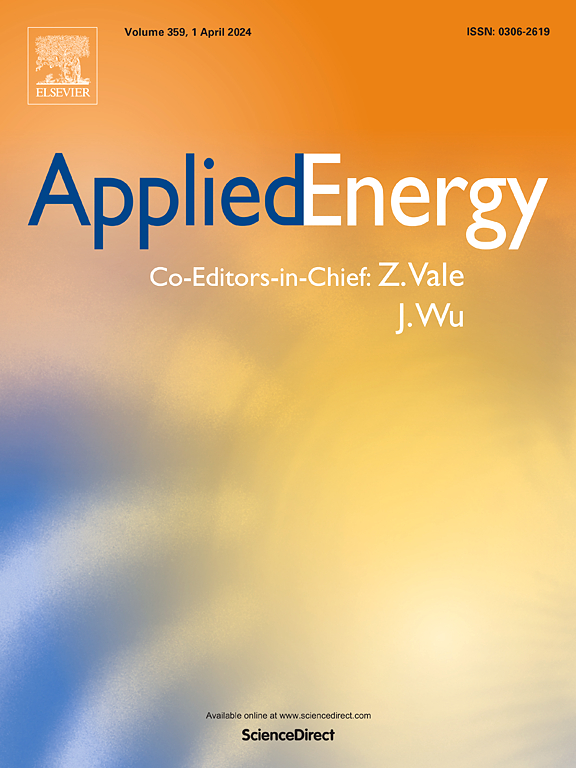Probabilistic geo-referenced grid modeling: A Bayesian approach for integrating available system measurements
IF 11
1区 工程技术
Q1 ENERGY & FUELS
引用次数: 0
Abstract
With the ongoing implementation of new climate targets, power distribution grids are increasingly integrating behind-the-meter photovoltaic (PV) systems, electric vehicle (EV) home chargers, and heat pumps (HPs). The integration of these solutions can often result in grid congestion issues, requiring appropriate mitigation measures. Designing these measures can be challenging in the absence of a digital and up-to-date model of the existing infrastructure, which is often the case at the low-voltage (LV) level. In this work, we introduce a novel two-stage Bayesian approach for establishing a probability distribution of geo-referenced power flow (PF)-ready grid models using available system measurements. We demonstrate the proposed approach in a residential region in Schutterwald, Germany. We find that integrating available system measurements can effectively enhance the quality of the distribution, yielding potential grid models that more accurately align with the existing infrastructure. Moreover, we showcase the practical utility of the proposed approach for assessing overvoltage within a specific grid segment subject to high rooftop PV adoption. While state-of-the-art baselines either fail to identify any overvoltage issues or are inconclusive, integrating available system measurements using the proposed approach offers a more reliable assessment.
概率地理参考网格建模:集成可用系统测量的贝叶斯方法
随着新的气候目标的持续实施,配电网越来越多地集成了电表后光伏(PV)系统、电动汽车(EV)家用充电器和热泵(hp)。这些解决方案的集成通常会导致电网拥堵问题,需要采取适当的缓解措施。在缺乏现有基础设施的数字化和最新模型的情况下,设计这些措施可能具有挑战性,这种情况通常发生在低压(LV)水平。在这项工作中,我们介绍了一种新的两阶段贝叶斯方法,用于利用可用的系统测量值建立地理参考潮流(PF)就绪电网模型的概率分布。我们在德国舒特瓦尔德的一个住宅区演示了所提出的方法。我们发现集成可用的系统测量可以有效地提高分布的质量,产生更准确地与现有基础设施对齐的潜在网格模型。此外,我们还展示了所提出的方法的实际效用,用于评估高屋顶光伏采用的特定电网段内的过电压。虽然最先进的基线要么无法识别任何过电压问题,要么是不确定的,但使用拟议的方法集成可用的系统测量提供了更可靠的评估。
本文章由计算机程序翻译,如有差异,请以英文原文为准。
求助全文
约1分钟内获得全文
求助全文
来源期刊

Applied Energy
工程技术-工程:化工
CiteScore
21.20
自引率
10.70%
发文量
1830
审稿时长
41 days
期刊介绍:
Applied Energy serves as a platform for sharing innovations, research, development, and demonstrations in energy conversion, conservation, and sustainable energy systems. The journal covers topics such as optimal energy resource use, environmental pollutant mitigation, and energy process analysis. It welcomes original papers, review articles, technical notes, and letters to the editor. Authors are encouraged to submit manuscripts that bridge the gap between research, development, and implementation. The journal addresses a wide spectrum of topics, including fossil and renewable energy technologies, energy economics, and environmental impacts. Applied Energy also explores modeling and forecasting, conservation strategies, and the social and economic implications of energy policies, including climate change mitigation. It is complemented by the open-access journal Advances in Applied Energy.
 求助内容:
求助内容: 应助结果提醒方式:
应助结果提醒方式:


